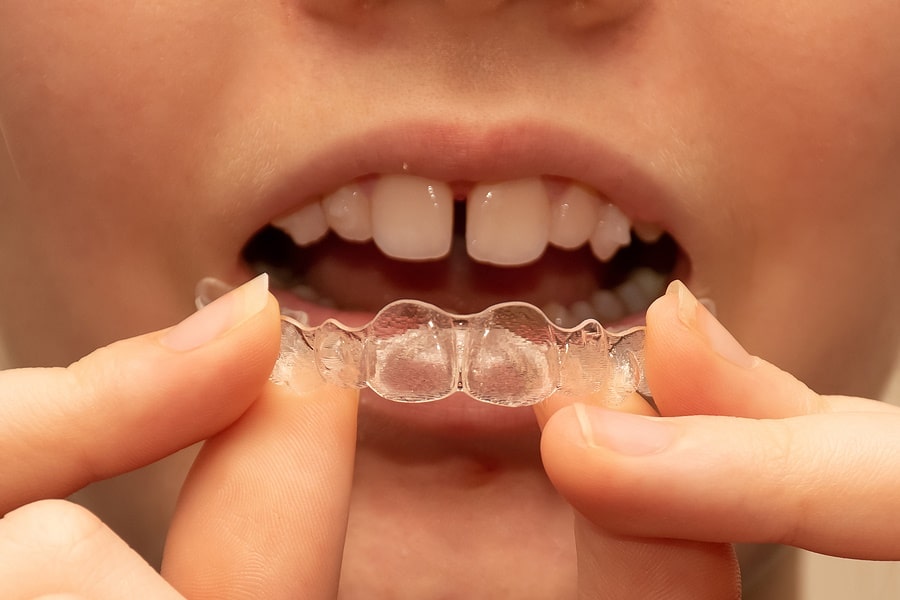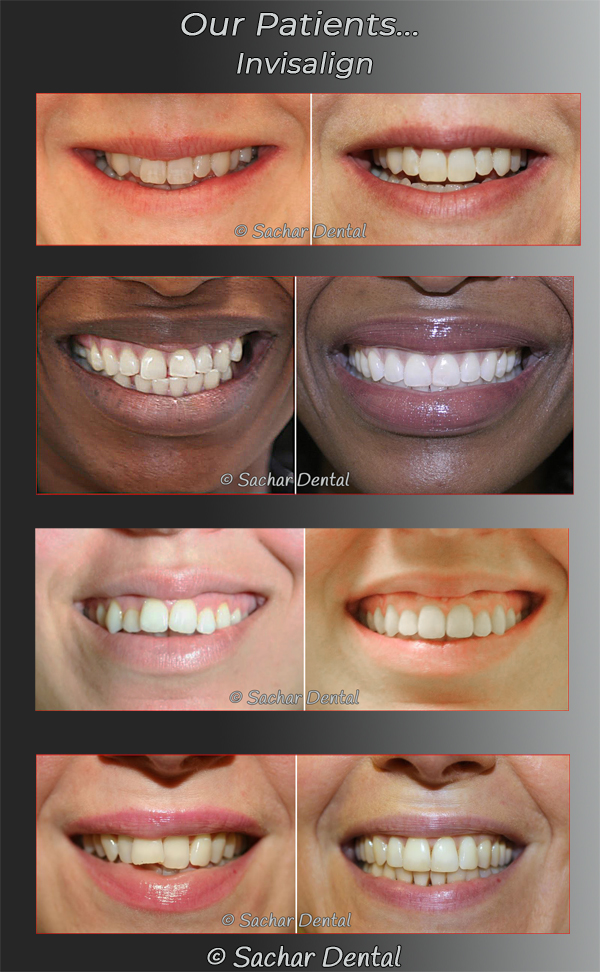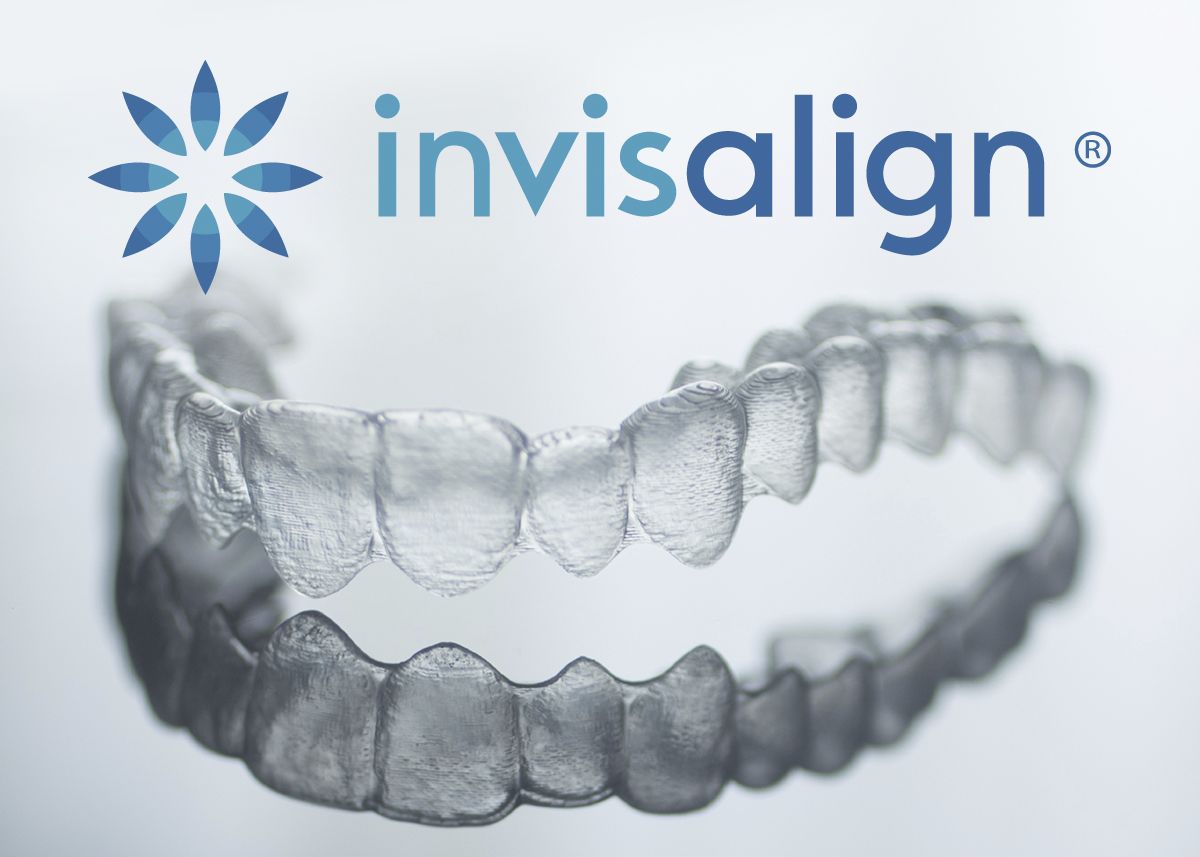Invisalign vs. Conventional Dental braces: Which Option Is Right for You?
When thinking about orthodontic therapy, the choice in between Invisalign and standard braces provides a number of crucial aspects that warrant careful evaluation. Invisalign uses a discreet choice with detachable aligners, while traditional dental braces provide an extra noticeable yet efficient remedy for severe imbalance. Each option incorporates distinct advantages and drawbacks associated to aesthetic appeals, convenience, therapy period, and cost. Understanding these nuances is crucial for making an educated choice that lines up with your individual choices and way of life. The concern remains: which choice will ideal satisfy your orthodontic requirements and expectations?
Review of Therapy Alternatives

On the other hand, standard braces contain steel brackets and wires that are bound to the teeth. This method uses constant stress gradually to accomplish positioning. While effective for complex orthodontic issues, traditional dental braces need normal brows through for adjustments and can pose challenges in maintaining oral health as a result of the difficulty of cleaning around braces and cords.
Both choices have their advantages, and the option commonly hinges on particular dental conditions, way of life choices, and patient conformity. Eventually, speaking with an orthodontic professional is important for determining one of the most appropriate therapy strategy tailored to individual demands. Understanding the subtleties of each alternative can significantly influence the overall success of orthodontic treatment.
Aesthetic Factors To Consider
A considerable element influencing the option between Invisalign and conventional braces is the visual allure each treatment uses. Invisalign aligners are crafted from clear plastic, making them essentially undetectable when worn.
In comparison, conventional dental braces contain steel brackets and cords, which can be more noticeable. While innovations in orthodontic technology have caused the development of smaller sized braces and tinted elastics, standard dental braces still preserve an even more noticeable account. For some individuals, the visibility of dental braces may hinder them from looking for required treatment.
Ultimately, the option between Invisalign and typical braces may rest on personal choices regarding appearances. Clients that prioritize discretion frequently lean toward Invisalign, while those who are less worried about presence may select typical dental braces. Understanding the aesthetic implications of each option is crucial for making an informed decision that lines up with one's way of life and preferences.
Comfort and Convenience

In terms of ease, Invisalign aligners are removable, allowing people to enjoy their favorite foods without constraint and keep ideal oral health. Brushing and flossing are simplified, as the aligners can be secured throughout these regimens, whereas typical dental braces call for careful maneuvering around wires and braces.
Furthermore, Invisalign's modern system enables for less orthodontic sees. People generally receive several sets of aligners simultaneously, which can improve the therapy process and minimize time spent in the orthodontist's chair. In contrast, standard braces demand regular modifications, making them much less practical for those with busy timetables. Invisalign. Overall, the comfort and ease of Invisalign make it an appealing selection for lots of people looking for orthodontic treatment.
Treatment Duration and Performance
While both Invisalign and standard dental braces work in remedying oral imbalances, the period of therapy can differ dramatically between both choices. Commonly, Invisalign treatment can take anywhere from 12 to 18 months, depending on the complexity of the case. The clear aligners function by gradually shifting teeth into their desired positions, and normal follow-ups with an orthodontist aid make sure progression stays on course.
On the other hand, typical dental braces commonly call for a longer dedication, typically ranging from 18 months to three years. This is due to their fixed nature and the usage of brackets and cords, which can be much more reliable for serious misalignments and complex cases (Invisalign). The treatment performance of conventional braces is well-documented, as they permit precise adjustments and better control over tooth motion
Ultimately, the selection between Invisalign and standard braces may rest on both the expected treatment period and the certain dental problems available. Consulting with an orthodontist is important, as they can give tailored suggestions based upon individual requirements, making certain the selected approach straightens with desired durations and end results.
Price Comparison and Insurance Policy Options
Expense plays a significant function in the decision-making process for individuals taking into consideration orthodontic therapy, whether choosing for Invisalign or typical braces. On average, the cost of Invisalign ranges from $3,000 to $8,000, while conventional braces usually cost between $2,000 and $6,000. Factors influencing these prices include the intricacy of the instance, the period of therapy, and geographical area.
Several dental insurance coverage strategies offer partial insurance coverage for orthodontic therapies, however the specifics can vary extensively. Typically, conventional braces published here might be extra often covered by insurance coverage plans contrasted to Invisalign, which some insurance firms classify as an aesthetic procedure.
Additionally, a number of orthodontic practices supply adaptable layaway plan, making both therapy options extra obtainable. Patients ought to ask about potential financing choices and discount rates for ahead of time payments. Reviewing the total cost, including insurance policy benefits and layaway plan, is crucial for making an informed decision that straightens with both visual choices and spending plan considerations.

Final Thought
In recap, the choice between Invisalign and standard dental braces depends upon numerous aspects, consisting of visual choices, convenience, treatment duration, and cost. Invisalign offers a discreet, removable alternative that assists in dental hygiene and dietary adaptability, while typical dental braces might be preferable for complex dental problems and commonly come at a lower price factor. Eventually, consultation with an orthodontist is important to analyze private scenarios and establish one of the most ideal therapy choice for attaining ideal dental alignment.
When taking into consideration orthodontic treatment, he has a good point the option in between Invisalign and standard braces presents a number of important factors that merit careful examination.Contrasting Invisalign and standard braces discloses distinctive therapy options for orthodontic correction.While both Invisalign and standard dental braces are reliable in correcting dental misalignments, the duration of treatment can differ dramatically between the 2 options.Expense plays a substantial function in the decision-making procedure for individuals thinking about orthodontic therapy, whether deciding for Invisalign or standard braces.In recap, the choice in between Invisalign and typical braces hinges on multiple elements, including aesthetic choices, comfort, therapy discover this duration, and expense.
Comments on “The Price of Invisalign: Understanding the Investment in Your Smile”